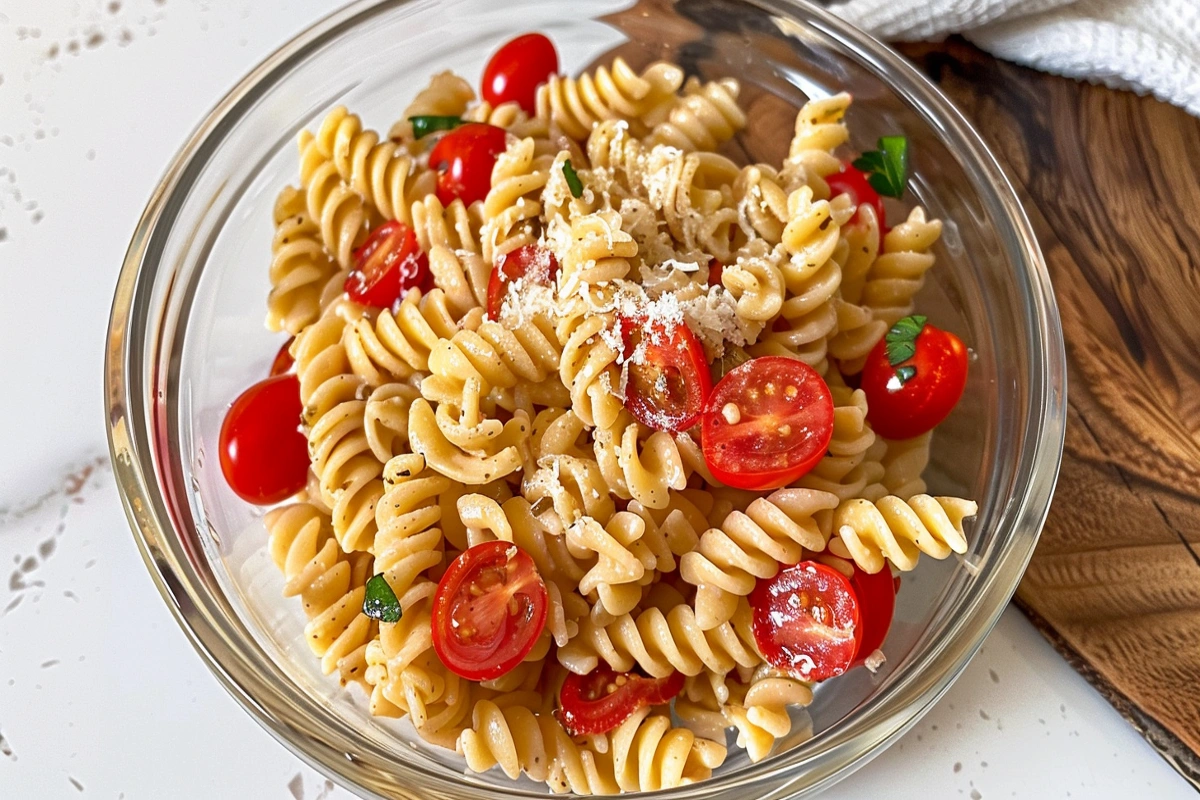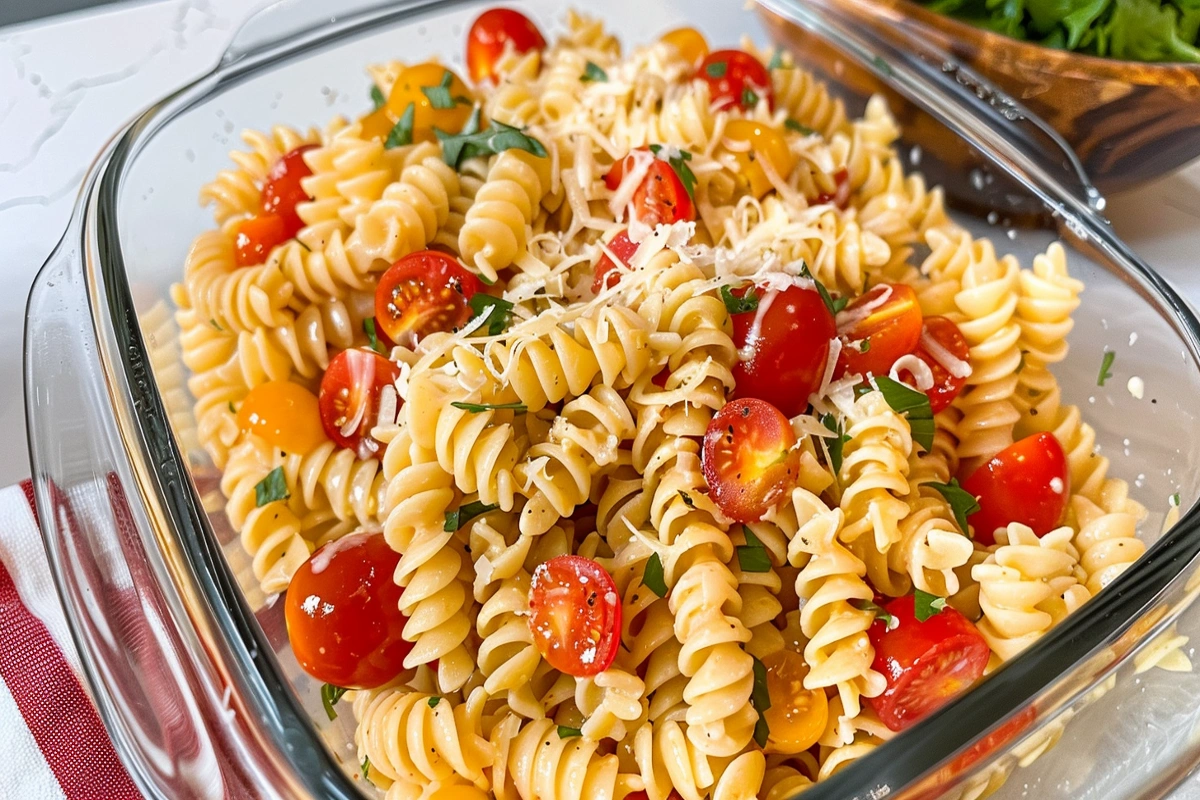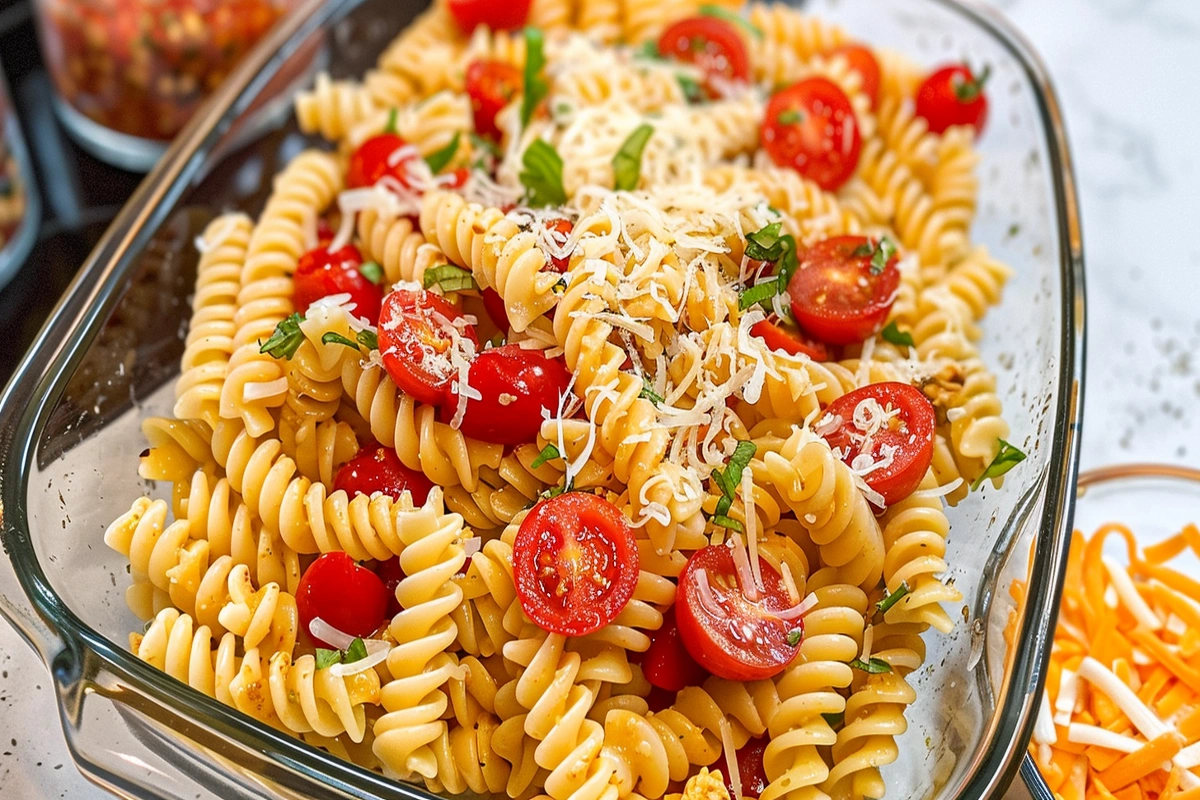Introduction
Pasta salad is a beloved dish at picnics, potlucks, and family gatherings, but it often raises a common question: Do you rinse pasta in cold water for pasta salad? The answer is not as straightforward as one might think. Rinsing pasta can significantly alter the texture, flavor, and overall quality of your salad, so understanding when to rinse and when not to rinse is crucial. Let’s discover If You Rinse Pasta in Cold Water for Pasta Salad.
In this comprehensive guide, we will dive deep into the science and best practices of pasta preparation, explore the benefits and downsides of rinsing, and provide a detailed approach to making the perfect pasta salad. We’ll also tackle common misconceptions, rinsing alternatives, and share tried-and-tested recipes to elevate your pasta dishes.
Why Should You Rinse Pasta for Pasta Salad?
Rinsing pasta serves several purposes, especially when it comes to cold pasta dishes like pasta salad. Here’s why many recipes recommend this step:
- Stops the Cooking Process: When pasta is drained straight from boiling water, it continues to cook from residual heat. Rinsing with cold water halts this cooking process immediately, preserving the pasta’s al dente texture. This is particularly crucial for pasta salads, where a mushy texture can ruin the dish.
- Removes Surface Starch: When pasta cooks, it releases starch onto its surface, making it sticky. While this starch is helpful for sauce adhesion in hot dishes, it’s not desirable in cold salads. Rinsing removes this sticky layer, ensuring that your pasta doesn’t clump together.
- Prevents Dressing Absorption: Rinsing helps create a barrier on the pasta surface, preventing it from soaking up too much of your dressing. This means your pasta salad won’t become dry over time and will maintain its moist and creamy texture.
- Cool Pasta for Immediate Use: If you’re short on time and need to assemble your pasta salad quickly, rinsing is a great way to cool down the pasta for immediate mixing with other cold ingredients.
Tip: For recipes like Chicken and Broccoli Pasta, where a hot sauce is involved, rinsing should be avoided. The starch helps the sauce cling better, resulting in a more cohesive dish.
Does Rinsing Affect the Flavor of Pasta?
Absolutely! The flavor of your pasta is impacted by whether or not you choose to rinse it. Here’s how:
- Seasoning Loss: When you cook pasta, it’s important to salt the water generously. This salt is absorbed into the pasta, seasoning it from the inside out. Rinsing removes some of this surface salt, potentially making your pasta salad taste bland. To counter this, you can season the rinsing water slightly or add a bit more salt to your dressing.
- Reduced Starch Layer: As mentioned earlier, starch helps dressing cling to the pasta. If you rinse, your dressing will likely coat the pasta less evenly, so consider a thicker or emulsified dressing to compensate.
For salads like 4-Ingredient Pasta Salad, rinsing is preferred because the dish uses simple ingredients that can be overpowered by too much seasoning on the pasta.
When Should You Rinse and When Should You Skip It?

There’s a time and place for rinsing pasta. Follow these guidelines to decide:
Rinse Pasta For:
- Cold Salads: When making pasta salad, rinsing ensures the pasta doesn’t clump and stays cool, which is essential for a salad that’s meant to be served cold.
- Stir-Fries: If using pasta in a stir-fry, like Asian-style noodle dishes, rinsing prevents the pasta from sticking together.
- Baking Dishes: When layering pasta in casseroles or baked dishes, rinsing helps it lay flat and separate evenly.
Don’t Rinse Pasta For:
- Hot Sauces: For dishes like spaghetti Bolognese or Alfredo pasta, the starchy layer helps sauces adhere, making for a richer, more flavorful experience.
- Pasta Casseroles: For baked pasta dishes like lasagna, unrinsed pasta holds onto the sauce better and doesn’t dry out during baking.
- One-Pot Pasta Meals: The starch helps thicken the sauce in dishes where everything cooks together.
Alternatives to Rinsing:
If you’re not a fan of rinsing but want to avoid sticky pasta, there are some alternatives:
- Ice Bath Method: Instead of rinsing, dunk your drained pasta into a bowl filled with ice water. This cools the pasta rapidly and stops the cooking process without washing away too much flavor.
- Spread Out and Air Dry: After draining, spread the pasta on a large baking sheet in a single layer. Toss gently with a little olive oil, and let it cool naturally. This method works well for dishes like Chicken Casserole with Pasta and Broccoli.
- Toss with Dressing Early: If you’re using a vinaigrette-based dressing, toss the pasta with a small amount while it’s still warm. This allows the dressing to absorb without making the pasta sticky.
Tips for Maintaining Pasta Texture in Pasta Salad
Achieving the perfect texture in pasta salad can be tricky. Here are some tips to ensure your salad turns out just right:
- Cook Until Al Dente: This means cooking the pasta until it still has a bit of bite. Pasta in cold salads tends to soften further after cooling and absorbing moisture, so slightly undercooking it helps maintain the right texture.
- Salt the Water Generously: The water should be as salty as seawater. This seasons the pasta internally, making it flavorful even after rinsing.
- Cool Completely Before Adding Dressing: Adding dressing to warm pasta can cause the pasta to soak up too much of it, resulting in a dry salad. Ensure the pasta is completely cool before combining with dressings.
- Use Olive Oil to Prevent Sticking: After rinsing, lightly coat the pasta with olive oil. This helps prevent clumping without affecting the flavor significantly.
Recommended Pasta Salad Recipes
Here are some easy and delicious pasta salad recipes you can try:
- Classic Italian Pasta Salad: Combine cooked rotini with pepperoni, bell peppers, cherry tomatoes, olives, mozzarella balls, and a tangy Italian dressing.
- Creamy Ranch Bacon Pasta Salad: This salad features elbow macaroni tossed with crispy bacon, chopped celery, red onions, and a creamy ranch dressing. Perfect for those who prefer a richer salad.
- Mediterranean Pasta Salad: Use bowtie pasta mixed with sun-dried tomatoes, artichoke hearts, olives, feta cheese, and a lemon-garlic vinaigrette for a light and zesty option.
*Looking for a quick and easy version? Try the 4-Ingredient Pasta Salad for a simple yet satisfying dish.
Common Mistakes to Avoid When Making Pasta Salad
Making pasta salad seems straightforward, but there are a few mistakes to watch out for:
- Overcooking the Pasta: Overcooked pasta becomes mushy, especially in cold salads. Always aim for al dente.
- Not Seasoning the Water Enough: Under-seasoned pasta will taste bland, even with a good dressing.
- Adding Dressing Too Early: This can cause the pasta to absorb too much dressing and dry out later. Add it just before serving for a fresh and moist salad.
- Using the Wrong Pasta Shape: Delicate shapes like spaghetti or angel hair can break easily and aren’t suitable for pasta salads.
- Skipping the Rinse (When You Should Rinse): If you don’t rinse pasta intended for a salad, you risk a sticky, clumpy mess.
FAQs Related To Do You Rinse Pasta in Cold Water for Pasta Salad?
- Why should you rinse pasta for pasta salad?
Rinsing stops the cooking process and prevents starch build-up, making it ideal for cold salads. - Is it necessary to rinse pasta in cold water?
Yes, especially for cold pasta dishes, as it ensures a cool and firm texture. - How long should you rinse pasta for pasta salad?
Rinse until the pasta is completely cool—this usually takes about 30 seconds. - Can you use non-rinsed pasta for cold salads?
It’s possible, but it might lead to clumping and a heavier texture. - Should You Rinse Pasta for Macaroni Salad?
Definitely! Macaroni salad is a type of pasta salad where rinsing is essential to achieve the right texture and creaminess. - Can You Rinse Pasta Ahead of Time?
Yes, you can rinse pasta ahead of time, but toss it with a little olive oil to prevent sticking. Store in an airtight container in the refrigerator until ready to use. - What’s the Best Pasta Shape for Pasta Salad?
Short, sturdy pasta shapes like fusilli, penne, and bowties are best. They hold up well and capture the dressing nicely. - Can I Use Gluten-Free Pasta for Pasta Salad?
Yes, but note that gluten-free pasta can have a different texture. Follow the same guidelines for rinsing and undercooking slightly to maintain texture integrity. - What Can I Add to Pasta Salad to Make It More Flavorful?
Consider adding fresh herbs like basil, parsley, or cilantro, a splash of lemon juice, or some grated Parmesan cheese for added depth. - What are the best pasta salad dressing options for rinsed pasta?
Creamy dressings like ranch, mayonnaise-based dressings, or Caesar dressing work best with rinsed pasta.
Additional FAQs:
- Can You Rinse Pasta Ahead of Time?
Yes, you can rinse pasta ahead of time, but toss it with a little olive oil to prevent sticking. Store in an airtight container in the refrigerator until ready to use. - Should You Rinse Pasta for Macaroni Salad?
Definitely! Macaroni salad is a type of pasta salad where rinsing is essential to achieve the right texture and creaminess. - What’s the Best Pasta Shape for Pasta Salad?
Short, sturdy pasta shapes like fusilli, penne, and bowties are best. They hold up well and capture the dressing nicely. - Can I Use Gluten-Free Pasta for Pasta Salad?
Yes, but note that gluten-free pasta can have a different texture. Follow the same guidelines for rinsing and undercooking slightly to maintain texture integrity. - What Can I Add to Pasta Salad to Make It More Flavorful?
Consider adding fresh herbs like basil, parsley, or cilantro, a splash of lemon juice, or some grated Parmesan cheese for added depth.
Final Thoughts: Do You Rinse Pasta in Cold Water for Pasta Salad?

The choice to rinse or not rinse ultimately comes down to the type of salad you’re preparing and your personal preference. For most cold pasta salads, rinsing is recommended to achieve a light, non-sticky texture. However, if you want your dressing to cling better, consider skipping the rinse and opting for a thicker dressing.
Remember to choose the right pasta shape, cook until al dente, and balance the flavors with fresh ingredients and vibrant dressings. With these tips, your next pasta salad is guaranteed to be a hit!
Happy cooking! 🎉

